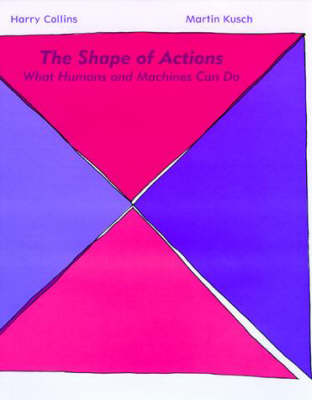The MIT Press
3 total works
Finally, they look at a historical case -- the technological development of the air pump -- applying their categorization of actions to the processes of mechanization and automation. Automation, they argue, can occur only where what we want to bring about can be brought about through mimeomorphic action.
Scientists have been trying to confirm the existence of gravitational waves for fifty years. Then, in September 2015, came a “very interesting event” (as the cautious subject line in a physicist's email read) that proved to be the first detection of gravitational waves. In Gravity's Kiss, Harry Collins—who has been watching the science of gravitational wave detection for forty-three of those fifty years and has written three previous books about it—offers a final, fascinating account, written in real time, of the unfolding of one of the most remarkable scientific discoveries ever made.
Predicted by Einstein in his theory of general relativity, gravitational waves carry energy from the collision or explosion of stars. Dying binary stars, for example, rotate faster and faster around each other until they merge, emitting a burst of gravitational waves. It is only with the development of extraordinarily sensitive, highly sophisticated detectors that physicists can now confirm Einstein's prediction. This is the story that Collins tells.
Collins, a sociologist of science who has been embedded in the gravitational wave community since 1972, traces the detection, the analysis, the confirmation, and the public presentation and the reception of the discovery—from the first email to the final published paper and the response of professionals and the public. Collins shows that science today is collaborative, far-flung (with the physical location of the participants hardly mattering), and sometimes secretive, but still one of the few institutions that has integrity built into it.
In Forms of Life, Harry Collins offers an introduction to social science methodology, drawing on his forty-plus years of conducting high-profile sociological research. In this concise, accessible, and engaging book, Collins explains not only how to do sociology (the method) but also how to think about sociology (the meaning). For example, he describes the three activities that are the foundations of sociological method (immersing oneself in a society; estranging oneself from that society; and explaining what has been discovered to those who have not been immersed) and goes on to consider broader questions of the meaning of science in relation to social science and the scientific authority of “subjective” methods. He explains that sociology is the study of social collectivities (often overlapping, subdividable, and embedded), and cites Wittgenstein's notion of “forms of life” in his definition of collectivity.
Collins covers such methodological topics as participant comprehension; interview-based fieldwork (“expect plans to fail”); interactional expertise; alternation and methodological relativism; tangible and inferential experiments; tribalism and emotional loyalty; and how to communicate your findings. Finally, he offers recommendations for “saving the science of sociology,” considering, among other things, sociology's identity as a discipline and the perils of both “groupism” and being too afraid of it. Appendixes offer a code of conduct for interviews; a list of his relevant publications; and an account, in Q&A form, of a disastrous day in the life of a sociologist doing fieldwork.


